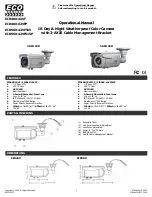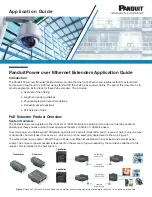
Falcon2 4M, 8M, and 12M Camera User's Manual
65
Teledyne DALSA
03-032-20107-03
General Notes on FFC calibration
The cam era com es calibrated w ith three factory sets, one for each sensor bit d ep th. These sets sw itch
au tom atically w hen the u ser changes
pixelSizeInput.
In ad d ition to the factory calibrations, the cam era
p rovid es fou r u ser configu rable FFC sets. These can be calibrated and saved in the cam era. For m ore
information on this, see ―H ow to d o an FFC Setup in the Camera‖.
Another op tion is to p erform the flat field correction in the fram e grabber. See the section H ow to d o a
FFC Setu p via Sap era Cam Exp ert for m ore inform ation.
In either case, w e recom m end that you rep eat the correction w hen a tem p eratu re change of greater than
10 °C occu rs.
For best results, ensure that:
1.
Gain (PRN U) calibration has a clean, w hite reference. The qu ality of this reference is im p ortant
for p rop er calibration. White p ap er is often not su fficient becau se the grain in the w hite p ap er
w ill d istort the correction. White p lastic or w hite ceram ic w ill lead to better balancing.
2.
Am bient light flicker (e.g. flu orescent lights) is su fficiently low no t to affect cam era p erform ance
and calibration resu lts.
3.
The average p ixel shou ld be at least 20 % below the target ou tp u t. If the target is too close, then
som e p ixels m ay not be able to reach fu ll sw ing d u e to correction ap p lied by the cam era.
4.
When 6.25 % of p ixels from a single row w ithin the region of interest are clip p ed , flat field
correction resu lts m ay be inaccu rate.
5.
Correction resu lts are valid only for the cu rrent black offset valu es. If you ch ange this valu e, it is
recom m end ed that you recalcu late you r coefficients.
An important note on w indow blemishes:
When flat field correction is p erform ed , w ind ow cleanliness is p aram ou nt. The figu re below show s an
exam p le of w hat can hap p en if a blem ish is p resent on the sensor w ind ow w hen flat field corr ection is
p erform ed . The blem ish w ill cast a shad ow on the w afer. FFC w ill com p ensate for this shad ow by
increasing the gain. Essentially FFC w ill create a w hite sp ot to com p ensate for the d ark sp ot (shad ow ). As
long as the angle of the incid ent light rem a ins u nchanged then FFC w orks w ell. H ow ever w hen the angle
of incid ence changes significantly (i.e. w hen a lens is ad d ed ) then the shad ow w ill shift and FFC w ill
m akes things w orse by not correcting the new shad ow (d ark sp ot) and overcorrecting w here the sh ad ow
u sed to be (w hite sp ot). While the d ark sp ot can be p otentially cleaned , the w hite sp ot is an FFC art efact
that can only be corrected by another FFC calibration.
















































